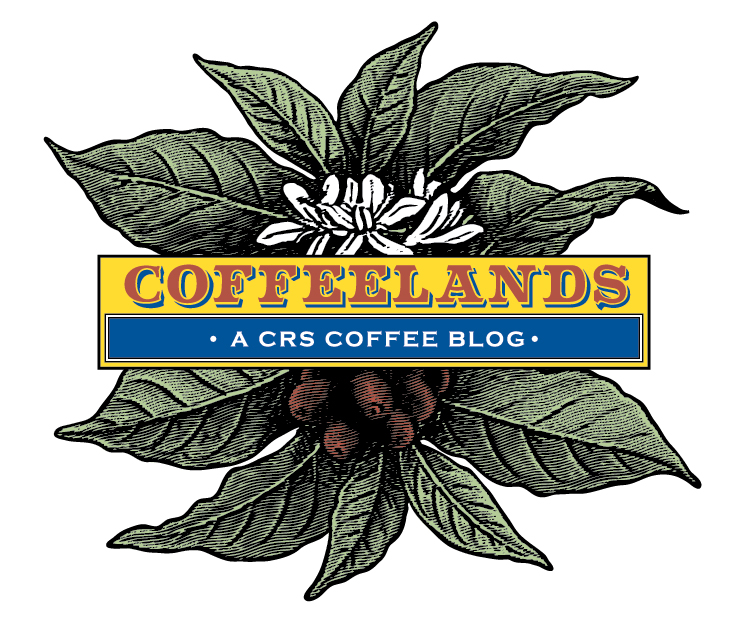Today, the annual review of the Coffeelands content you liked best over the past year.
.

.
WHO?
In 2015, the blog shifted to a multi-contributor format, meaning you got to hear from people other than me for a change as we worked four of my colleagues with different areas of expertise into the rotation. Hugh Aprile is a seasoned international development professional who leads a portfolio of water-smart agriculture projects in Central America. Kraig Kraft puts his Ph.D. in agroforestry to good use advising our coffee and cacao programming in the Americas. Paul Hicks has been leading water resource management programming at CRS for more than a decade. And Jefferson Shriver is a senior advisor on agroenterprise and climate change (and a coffee farmer). These new additions to the blog’s editorial team expanded its focus in 2015 to address a range of new issues with more credibility than I could alone, from soil to price risk management, from green water to credit, from coffee leaf rust to certifications.
If the blog’s increase in traffic in 2015 is any indication, you liked the new format.
.
WHAT?
“Old business”
We continued in 2015 to explore topics that are by now familiar to regular Coffeelands readers, including some that have been staples since the blog was launched in late 2009 (like business models and Fair Trade) and others of more recent vintage (like the Colombia Sensory Trial and farmworkers, both introduced in earnest in 2014).
.
Colombia Sensory Trial
We published a dozen new posts during 2015 on the Colombia Sensory Trial—our collaboration with friends in the research and specialty coffee communities to carefully and independently assess the sensory attributes of two of the most common coffee cultivars in Colombia: Castillo and Caturra. There was plenty of discussion on the blog of the results—which showed, to the surprise of many, narrow separation between the two. But readers weren’t satisfied with the headlines. You wanted to dig deeper. So for the second year in a row, the single most frequently visited post related to the Colombia Sensory Trial was this one on the origins of Castillo, published three years ago.
.
In 2015 we created this resource page to gather in a single place all the content we published or presented on the Colombia Sensory Trial. More coming soon, including a final report on the whole process.
http://coffeelands.crs.org/colombia-sensory-trial/
.
Farmworkers
Farm labor in the coffee sector was not a new issue for the Coffeelands blog in 2015, but we intensified our editorial focus on the largest and most vulnerable group of participants in coffee supply chains: farmworkers. That included calling into question some commonly held—but mistaken—beliefs about farm labor in the coffeelands.
.
It also meant getting closer to the farmworker experience, starting with two estates in Central America.
.
But our coverage of farm labor issues took a new direction in late 2015 when we shared the key findings of our research into slavery in the coffeelands of Brazil in this eight-part series on the issue.
.
Markets and business models
The blog has been concerned from its inception with the question of fairness in trade and the business models that most consistently unlock the greatest value for the smallholder farmers who have been the overriding focus of our work in the coffee sector since 2003. In 2015, I borrowed a memorable line from a cult classic to put a new spin on an old observation: the coffee we promote as “sustainable” may not be as sustainable as consumers think.
.
One business model we began to explore further in 2015 was the for-benefit corporation, or “B Corp” model, and the related B Corporation Certification.
.
Original research on costs of production we conducted in Colombia with our friends from the International Center for Tropical Agriculture (CIAT) underscored the precariousness of specialty coffee business models for smallholder farmers.
.
Those data showed that for the crop year we studied, farmers earned profits only on the microlots they sold to quality-focused roasters. The social and economic impacts of microlots remain a topic of considerable uncertainty and much discussion, including this two-part conversation with a specialty coffee colleague named “Alex” who counts herself/himself among the doubters.
.
Also, the tired Fair-Trade-v-Direct-Trade debate resurfaced in 2015. I was disappointed by that development, as it happened just after I was drawn into an emerging collaboration between roasters on both sides of that “great divide” that was for me the source of enormous hope for the future of specialty coffee. At the risk of perpetuating a debate that has, in my opinion, rarely generated thoughtful engagement or tangible benefits for the smallholder growers who seem to figure prominently in the discussion, I felt compelled to weigh in again on a topic I hadn’t touched for years.
.
“New business”
But 2015 wasn’t more of the same on Coffeelands. Our new contributors brought new expertise, new perspectives and new issues to the blog last year. They included some of the most widely read Coffeelands posts of the year and covered a wide range of issues, including these.
.
Breeding
.
Climate Change
Responding to the Climate Crisis through Crop Diversification
.
Price risk management
My colleague Kraig Kraft has published a series of conversations with leading coffee professionals about the importance of price risk management strategies and the mechanics of price risk management instruments. To farmer organizations that think they can’t afford to adopt these approaches and tools Kraig suggests they can’t afford not to. Acute price volatility doesn’t just threaten to undermine their profitability in a given crop year—it can put the hard work of many years at risk and put cooperatives and other farmer enterprises on the road to ruin.
Perspectives on PRM, part 1: Ed Canty – “risk management is everyone’s business”
.
Reinvestment in the farm
How can we encourage direct investment at the base of the coffee supply chain?
.
Soil
.
Water resource management
Finally, my colleague Paul Hicks introduced a new stream of content in 2015 focused on water resources in the coffeelands. His work has explained the vitally important ecosystem services that sustainable coffee agroforestry can deliver, including but not limited to increasing the quantity and improving the quality of the water that nearly 10 million people depend on in Central America alone—water whose sources lie in the region’s coffee fields.
.


